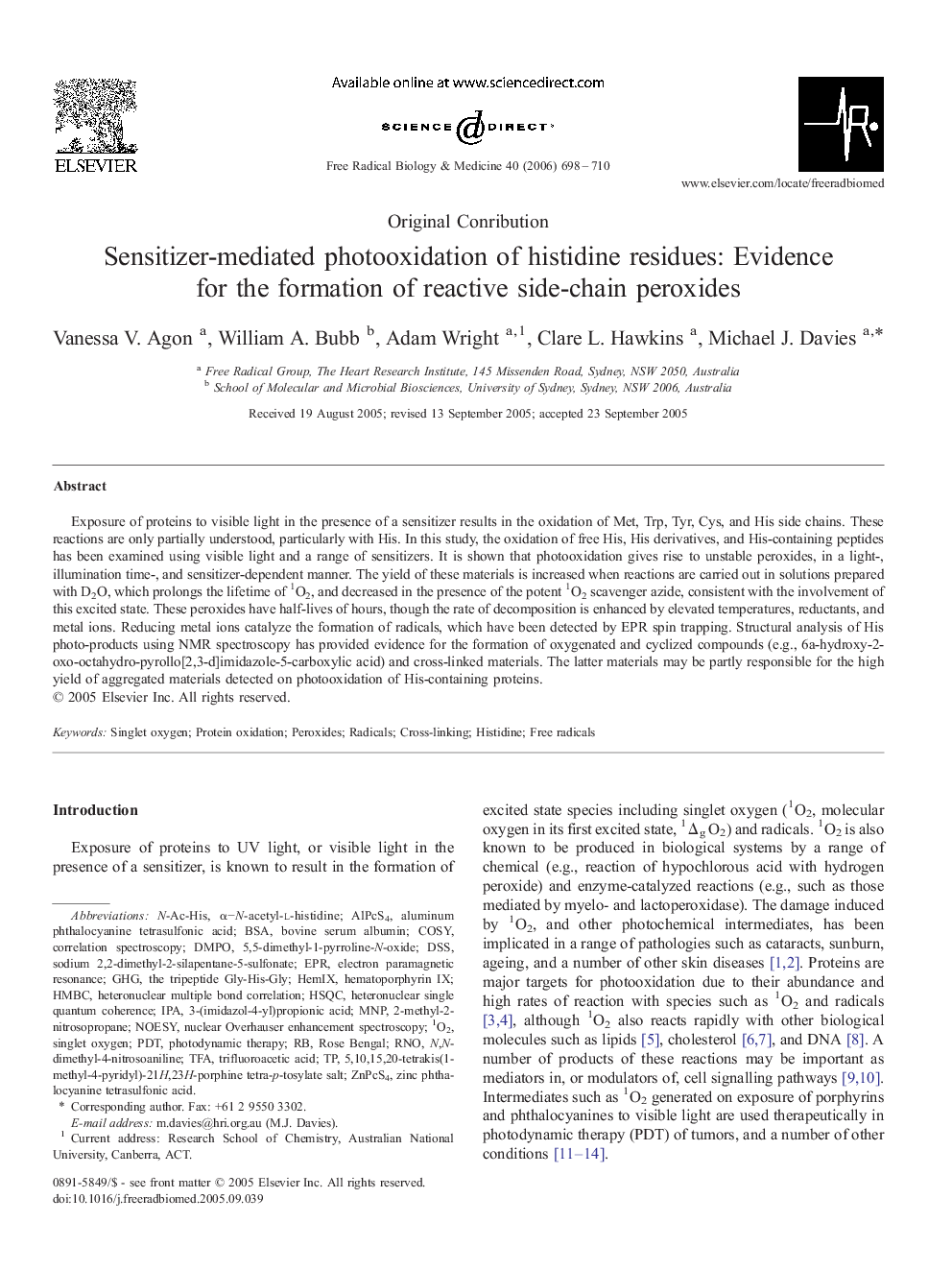| Article ID | Journal | Published Year | Pages | File Type |
|---|---|---|---|---|
| 1911738 | Free Radical Biology and Medicine | 2006 | 13 Pages |
Exposure of proteins to visible light in the presence of a sensitizer results in the oxidation of Met, Trp, Tyr, Cys, and His side chains. These reactions are only partially understood, particularly with His. In this study, the oxidation of free His, His derivatives, and His-containing peptides has been examined using visible light and a range of sensitizers. It is shown that photooxidation gives rise to unstable peroxides, in a light-, illumination time-, and sensitizer-dependent manner. The yield of these materials is increased when reactions are carried out in solutions prepared with D2O, which prolongs the lifetime of 1O2, and decreased in the presence of the potent 1O2 scavenger azide, consistent with the involvement of this excited state. These peroxides have half-lives of hours, though the rate of decomposition is enhanced by elevated temperatures, reductants, and metal ions. Reducing metal ions catalyze the formation of radicals, which have been detected by EPR spin trapping. Structural analysis of His photo-products using NMR spectroscopy has provided evidence for the formation of oxygenated and cyclized compounds (e.g., 6a-hydroxy-2-oxo-octahydro-pyrollo[2,3-d]imidazole-5-carboxylic acid) and cross-linked materials. The latter materials may be partly responsible for the high yield of aggregated materials detected on photooxidation of His-containing proteins.
